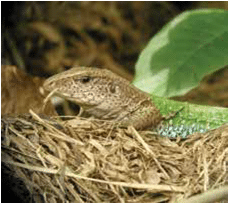CAN WE PREDICT SUCCESS OF NON-NATIVE SPECIES IN INTRODUCED HABITATS?

Exotic plant and animal species are transported daily; however, not every introduced species will survive and proliferate to become an established invasive. Given that billions of dollars are spent each year on eradicating invasive species, researchers Van Wilgen and Richardson examined the predictors of establishment success of introduced species, specifically reptiles and amphibians.
Their study, published in the journal Conservation Biology, suggests that establishment success of non-native reptiles and amphibians is most closely associated with number of introductions into non-native habitat. This supports previous findings of the establishment of invasive species.

The authors also suggest that sexual maturity at a young age plays an important role in establishment success. For example, frogs and lizards are known to reproduce very early in life, while turtles and snakes reach maturity much later. This characteristic helps explain the documented high establishment pattern of non-native frogs and lizards worldwide. Other strong predictors of establishment success are similarity in climate among the native and non-native habitats and being more distantly related from native species.
Studies, such as this, that aim to predict the probability of arrival and establishment of non-native species are crucial in preventing future invasions. Results from these studies can inform current regulations of the exotic pet trade. Like, for example—imposing more stringent laws on the transport of species that have a higher probability of establishment success based on the above factors.
Further Reading:
Van Wilgen, NJ and DM Richardson. 2012. The roles of climate, phylogenetic relatedness, introduction effort, and reproductive traits in the establishment of non-native reptiles and amphibians. Conservation Biology. doi: 10.1111/j.1523-1739.2011.01804.x
Jessica Stephens is a PhD student at The University of Georgia, Athens, GA, USA. jstephens@plantbio.uga.edu





